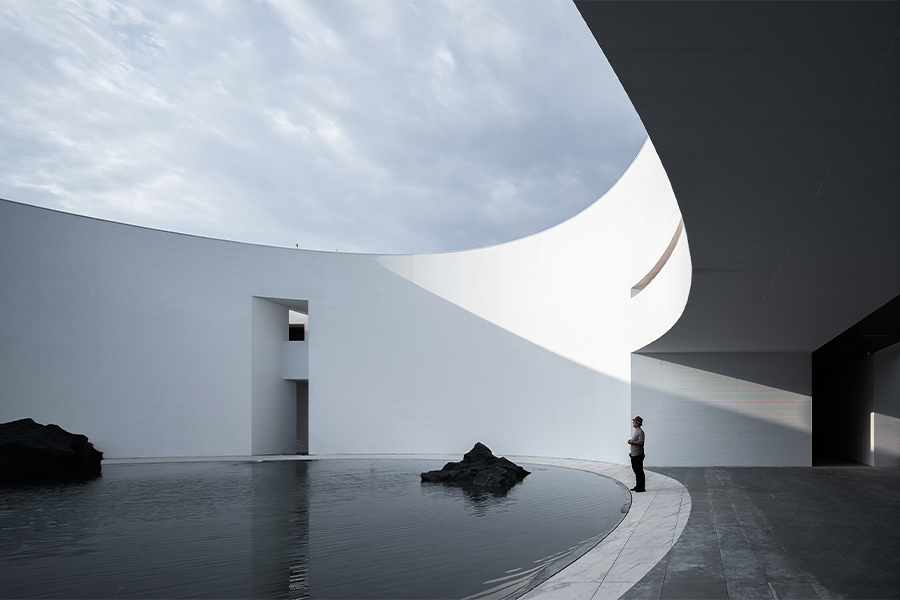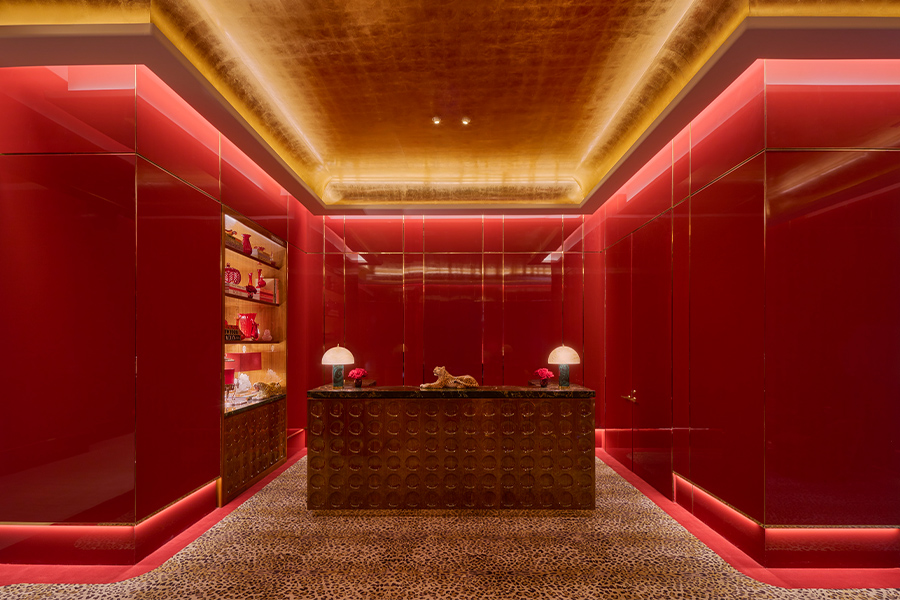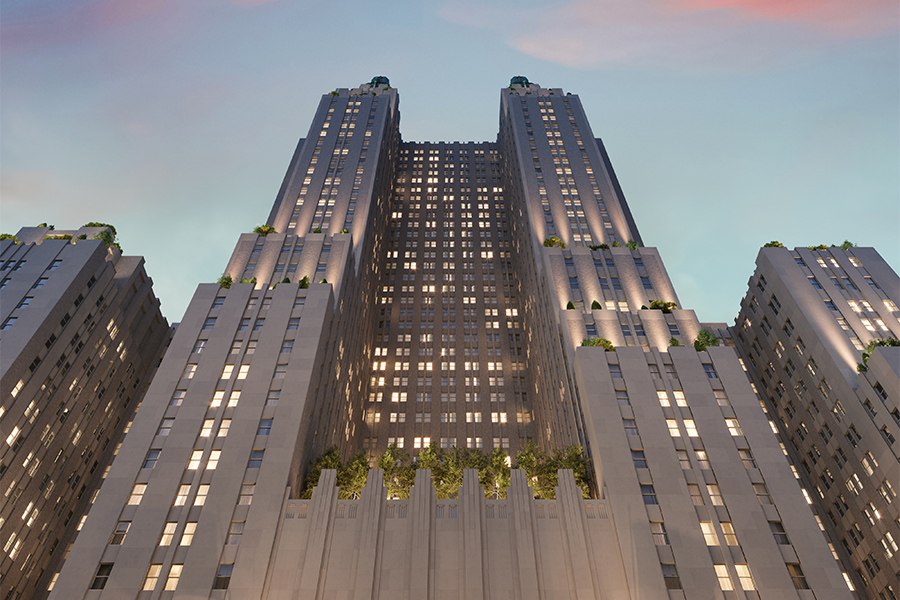The Zhou, Qin, Han, and Tang dynasties once ruled from Xi’an, the ancient capital and flourishing trade center in northwest China that doubled as one of the starting points for the Silk Road. Honoring that history, albeit in a subtle manner, was top of mind for Guangzhou-based firm IAPA when designing the Xi’an Taibai Wushanju Art Hotel.
Located near the city at the base of Mount Taibai, the highest peak in the Qingling range, the 57-room property is intended as a getaway for outdoor adventures and cultural deep dives alike, according to IAPA principal architect Paul Bo Peng, and is one element of a 156,000-square-foot complex that encompasses a leisure center and hall for art exhibitions. Unlike the cluster of guesthouses and hot springs hotels that typically attract tourists to the area, the hotel stands out for its aura of contemporary serenity, beginning with the white-, gray-, and rust-hued façade, a sleek, matte surface that brings together materials such as grainstone, sandstone, and weathered steel.

Conveying a contemporary ethos, the sleek façade is composed of white grainstone, dark gray sandstone, and weathered steel
When designing the hotel, Peng says that the team considered “how to interpret the cultural core of Eastern tradition in a modern way.” The most prominent result of this exploration is the Taibai Court, an alfresco circular space that links the building, corridor, and courtyard, complete with a sweeping curved wall, pond, and rooftop views of the mountains. The court’s striking configuration directly references the axial symmetry common to a bygone Xi’an, but as guests wander through it, “there is a connection between self spirit and nature,” Peng says. “People will be influenced by the quiet and poetic atmosphere.” By melding a classic grid reminiscent of a chessboard—an urban layout embraced by the Chinese for centuries—with an efficient stacking technique that compartmentalizes various functions, Peng believes that the hotel “redefines the relationship between vertical and horizontal.”
The design also lends itself to an interplay of bright and dark. “A series of rhythmic windows confine the light and shadow within the building,” explains Peng. “In conjunction with [the pattern] created by the lattice brick hollow wall, the sunlight and shadows of the trees linger gracefully on the surface of the walls, appearing inside and outside, enriching the depth of space” and instilling it with tranquil, Zen vibes. The hotel, adds Peng, matches “the inner soul of Xi’an.”
This article originally appeared in HD’s August 2021 issue.
More from HD:
10 Pink Spaces That Pack a Powerful Punch
The Hall Arts Hotel Paints a Vivid Picture in Dallas
3 Forward-Thinking Experiential Retail Concepts











